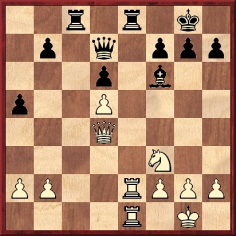
Edward Winter
Below is one of the most famous and brilliant games in chess history, but is it genuine?
1 e4 e5 2 Nf3 d6 3 d4 exd4 4 Qxd4 Nc6 5 Bb5 Bd7 6 Bxc6 Bxc6 7 Nc3 Nf6 8 O-O Be7 9 Nd5 Bxd5 10 exd5 O-O 11 Bg5 c6 12 c4 cxd5 13 cxd5 Re8 14 Rfe1 a5 15 Re2 Rc8 16 Rae1 Qd7 17 Bxf6 Bxf6

18 Qg4 Qb5 19 Qc4 Qd7 20 Qc7 Qb5 21 a4 Qxa4 22 Re4 Qb5 23 Qxb7 Resigns.
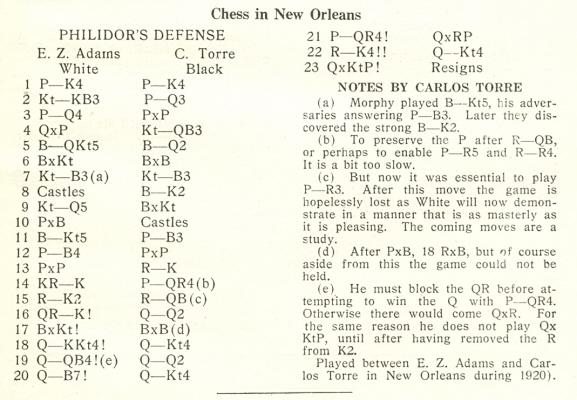
As shown above, with the bland heading ‘Chess in New Orleans’ page 157 of the November 1925 American Chess Bulletin introduced the chess world to one of the most controversial games ever to occur, or not to occur, in over-the-board play: a 23-move brilliancy ‘played between E.Z. Adams and Carlos Torre in New Orleans during 1920’. Torre, who had been in his mid-teens in 1920, provided five notes, including the following after 15...Rc8:
‘But now it was essential to play P-R3. After this move the game is hopelessly lost as White will now demonstrate in a manner that is as masterly as it is pleasing. The coming moves are a study.’
No-one, to our knowledge, has suggested that Torre was using the word ‘study’ in the sense of ‘composition’, i.e. to drop a hint that the game was spurious. Nor do we possess any record of the score having been published anywhere until the Bulletin gave it, after a five-year gap.
The possibility that the game was not authentic was first raised in C.N. in 1983 (C.N. 397), when we quoted from a book catalogue (‘Potpourri Eight’) issued by Dale Brandreth:
‘The world famous Adams-Torre game supposedly from New Orleans, 1920 is highly questionable. The first evident publication was in the American Chess Bulletin for 1925, page 157, with notes by Torre himself. But why would a game of such fantastic brilliance have not made the rounds years before? E.Z. Adams was largely responsible for bringing Torre to prominence, and the theory has been advanced by the noted chess writer David Hooper that Torre may have generously credited to Adams such a game which was partly actual play and partly analysis ...’
The following contribution from Dr Brandreth was published in C.N. 2571:
‘For some time I have been writing an account of the famous, but definitely spurious, game (it was at best post-mortem analysis) Adams-Torre, New Orleans, 1920. In this connection I have also been trying to track down the origins of the game Torre-Adams, New Orleans, 1920 (a French Defense) given in Chernev’s 1000 Best Short Games of Chess (page 418) without attribution of source. Torre won that game brilliantly, so it is at least plausible because Torre was a very strong player in 1920 and E.Z. Adams was no more than a Class “C” player, but I have been unable ever to locate it elsewhere. Jack O’Keefe, who has a special interest in Torre, has also been unable to find a source. I am somewhat skeptical about Chernev’s writings because I have always found him rather careless and unconcerned. He hardly ever gave sources for anything. The rare book Chess Players of New Orleans by A.M. Lockett gave the famous “game” in which Adams played White, with a note indicating that he took it from the 1925 American Chess Bulletin, but without any additional information one might have expected him to furnish based on local comments.’
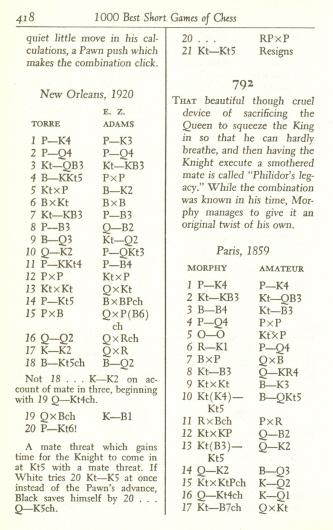
Now we turn to Adams himself. Who was he and what was his connection with Torre?
Edwin Ziegler Adams (1885-1944) was described as ‘The Sponsor of Carlos Torre’ in an article on pages 110-111 of the May-June 1927 American Chess Bulletin, which was accompanied by a picture of ‘The Adams Family’:
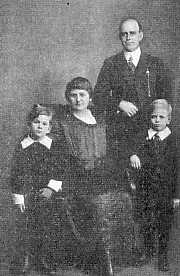
‘On the second page of Carlos Torre’s Development of Chess Ability, reserved for the dedication, appears the name of Edwin Z. Adams of New Orleans quite properly heading the list. We say quite properly because it was due to this Southern gentleman more than to anyone else that the little Mexican, now among the grand-masters of the game, started out upon the great adventure that took him first to New York and then overseas to his European successes. ...
“My chess career”, Mr Adams modestly wrote us many moons ago, “consists principally of my interest in Carlos. I commenced to study the game about ten years ago. I had a hard time of it, as I had to batter my way along and get whatever pointers I could pick up by watching the others play, and finally I learned the code and played over the games in the books. It was over two months before I was able to win a game from the poorest player I could find at the club (and the only one who would play with me), and it was only by “bucking the line” and being “thrown for many losses” and taking my medicine like a man that I finally learned to play a little.
About eight years ago I met Carlos. I think he was then about 14 years old. He was a small, dark-skinned, thin little fellow, very polite, quiet and serious for a boy of his age. He had learned to play chess from his father and brothers and soon was able to make short work of them over the chessboard. Dr Ainsley (now deceased) was their family physician, a member of the chess club and also a very good player, well above the average. When visiting the family one day they mentioned to him that they had a small member who could play a good game and asked him to play with the little chap and see if he really could play well. I think Carlos won two out of the three games to the surprise of all. Dr Ainsley then suggested that he play Mr Percy Moise, a very strong player. Carlos showed his strength with him also. Next, I think, he played with Mr C. Rosen, also one of the best here, with the same results.
Things, however, drifted along until I received a letter from his older brother telling of Carlos’ chess ability, when I arranged to have him come to the club and show what he could do. None of the old dignitaries with chess reputations wanted to play with the child, so a Dr Sternberg, a visitor, volunteered to play him. The latter had been toppling us all over, and that, I figured, would be a real test. I will never forget that day. As one of the gentlemen remarked, ‘You felt more like petting the little fellow than trying to beat him a game of chess’. Carlos electrified the crowd, and Dr Sternberg enjoyed his rout also.
Next, Carlos gave a peripatetic exhibition, playing six games at once, winning four and drawing two. The chess club was so impressed with his play that they gave him carte blanche, and from that time on he visited the rooms very often, until he could not get anyone to play with him, for they were all tired of being beaten. So he had nothing to do but come to my home occasionally, when we would play a few games and go over the openings together. His next feat was to win the city championship in 1923, which he did with ease.
During all these years he worked and attended night school, so he was driven very hard. After a very severe case of pneumonia he was out of a position, and I suggested that he go to New York, with an introduction to the American Chess Bulletin. He also took an interest in problems and endgames and, of course, was excellent in these branches. He won several prizes in Good Companion tourneys. This is about all I can give you concerning Carlos. To you, better than to anyone else, is known the rest.” ’
Further information is provided by a letter in our collection (see also C.N. 1366) which Adams wrote to Hermann Helms, the editor of the Bulletin, on 22 November 1920:
‘Dear Sir:-
I beg to acknowledge receipt of your interesting letter of 18 November and notice what you have to say in regard to everybody being wild about Rzeschewski and that nobody seems to be very much bothered about Capablanca at present. Such is life in a big city, as one new star appears the old one eventually becomes dim.
Of course the match with Dr Lasker and Capablanca would be interesting and I would like to see it come off but as long as it [sic] a commercial proposition the only benefit it would give chess is to give it a few cut and dry games and probably a large number of them draws. It looks like these big fellows want to squeeze the apple for all that is in it.
I have just received a visit from C. Torre, R., and I have obtained the following information from him. He was born in Merida, Yuc. Mex. 29 November 1904 and came with his parents to this country in 1916. He has been playing chess with his father and brothers for about six years and about two years with all comers. He learned the game from his father and brothers and became so efficient at it that he soon left them far behind. He has played the following with the strongest players to a finish in N.O. but I am sorry to say there is [sic] no records kept of the games.
James McDonnell 2 games, he won 1 and lost 1 Prof. Dixon 8 games, he won 5 and lost 3 Chas. Rosen 4 games, he won 2 and lost 1, draw 1 Percy Moise 5 games, he won 4 and lost 1 His simultaneous exhibition at the chessclub, he won eight and drew two games. In a lightning game with Mr E. Laker [sic] of Chicago played in April 1920 the game was given up as a draw.
The little fellow is very modest and unassuming and his success in chess has not given him the swell head. He has a very extensive knowledge of the openings also the end games. He is also a very good problem solver. If he had some professionals to play with, I think in a short time he would be very strong.
I am sending you herewith a copy of the only game that he could give me and hope you will find it of interest.
Awaiting your further kind favors, I beg to remain
Yours very truly,
EZA
The photograph C. Torre brought me was a post card photograph not fit to make a plate from so I would advise if you want a picture to ask brother Magee to loan you the one I sent him which will make you a very good cut.’
The two-page letter may be viewed here (page 1, page 2). We have no information on a draw against ‘Mr E. Laker of Chicago’ in 1920, but page 203 of the December 1921 American Chess Bulletin gave a loss by the Mexican (‘played between Carlos Torres [sic], 16 years old, and Edward Lasker of Chicago during the latter’s visit to New Orleans during November’).
C.N. 1366 quoted Dale Brandreth’s opinion on the above document:
‘This letter is very significant because it drives the final nail in the coffin of one of the most famous games of all time, a game that simply never was. ... It seems obvious that the game could not have been played up to 22 November of that year without Adams mentioning it or sending it to Helms, so except for the faint possibility that it was played from 23 November to 31 December of 1920 – and then surely Adams would have sent it to Helms at that later date – there simply was no such remarkable game played until that time. When Torre sent the game to Helms in 1925, it was simply his reconstruction of the “game” including the post mortem analysis that comprised the beautiful final combination. The game actually sent to Helms, referred to in this letter, could not have been the game since it was so sensational that Helms would have immediately published it.
... I also learned on excellent authority from Mexican contacts that Torre admitted to Mexican friends that the “game” was really post mortem analysis from a position reached in a skittles game in which after the game Torre showed Adams how he could have won brilliantly. Torre’s statement was that it was not so important who had won or the authenticity of the record, only that it was a beautiful game.’
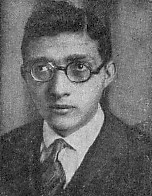
Carlos Torre
The matter was also discussed on pages 22-23 of Vida y Partidas de Carlos Torre by G. Velasco (Mexico, 1993) – see C.N. 2204 – and page 287 of the English edition, The Life and Games of Carlos Torre (Milford, 2000). From the latter volume:
‘While some authors (e.g. Fine in The World’s Great Chess Games, 1951, or Nigel Davies in The Power Chess Program, 1998) have presented this as an actual, serious encounter, there is strong, almost conclusive evidence that it was not. The author once casually queried Torre on it. After 57 years he could not quite recall the details, but what he said implied that from his viewpoint it really didn’t matter if it had been a skittles game or post-mortem analysis, so long as the combination was extremely original and beautiful. Torre’s friends, the late Alejandro Báez, and Pedro Busto Undiano, still living in Mexico City at this writing, knew him well when his memory was more reliable. Both of them assured this writer that the game in fact was never played; rather the whole idea had occurred to Torre after analyzing a skittles game. They said that Torre could find no better way to make the beautiful possibilities he saw known to the public than by inventing a game, so he decided to pretend he had lost it to his teacher Edward [sic – Edwin] Adams, for whom he had great affection.’
And what of Adams? We are aware of only one public comment by him on the Torre game. After Irving Chernev had published it on page 20 of the January 1943 Chess Review (‘This game ranks with the most brilliant ever produced in the whole history of chess.’) Adams reacted in a letter to the editor on page 146 of the May 1943 issue:
‘Allow me to thank you for the very complimentary remarks in Chess Review (January 1943) on my game with my little Mexican friend Carlos Torre.
Three of my sons are now in service of their Country and I would like to have you send each of them a copy of your January issue, so that they can show the game to their friends and say “That’s my Pop.”
E.Z. Adams
New Orleans, La.’
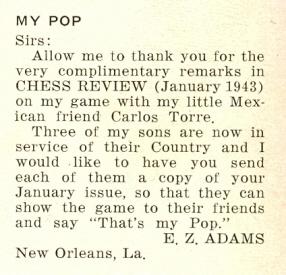
Adams died the following year. (The death notice in the New Orleans States newspaper, 20 May 1944 named the sons in question as ‘Edwin Z. Jr, USNR, Captain Gerard C., US Army Cadet, Joseph T., USMA’.)
Finally, C.N. 2227 quoted the following paragraph from page 156 of the American Chess Bulletin, July-August 1921:
‘New Orleans, however, is not wholly without its chess organ, for a department is regularly devoted to chess in the pages of The Morning Star, a Catholic publication. E.Z. Adams is the chess editor.’
Can it be ascertained what appeared in Adams’ column about Torre?
Afterword: The above article is a digest of various C.N. items, as listed under ‘Adams v Torre’ in the Factfinder. Subsequent items are reproduced below.
From page 123 of The Teenage Chess Book by Reuben Fine (New York, 1965):
‘Our last scene is entitled Hail the Unknown. It is from a game Adams-Torre, New Orleans, 1925 [sic]. Adams, the winner, was never heard of before and has never been heard from since. Yet his play here bears the unmistakable stamp of real creative genius.’
Fine’s remark about Adams’ obscurity is an exaggeration. For instance, our extensive review of the evidence about the game in C.N. 3472 mentioned that Adams was the subject of an article on pages 110-111 of the May-June 1927 American Chess Bulletin. The same issue (pages 97-99) had, eccentrically, a long article by him on the Great Mississippi Flood of 1927.
(5024)
Dale Brandreth (Yorklyn, DE, USA) sends two games from pages 40 and 138 of the rare book Chess Players of New Orleans by Andrew Lockett (New Orleans, 1935):
Edwin
Ziegler
Adams
– Andrew Lockett
New Orleans, 1925
French Defence
1 e4 e6 2 d4 b6 3 f3 Bb7 4 Bd3 Qh4+ 5 g3 Qh5 6 Be3 Bd6 7 e5 Bxe5 8 dxe5 Qxe5 9 Kf2 Qxb2 10 Nd2 Nf6 11 h3 Nh5 12 Ne2 O-O 13 Bd4 Qa3 14 Nc4 Qe7 15 Qd2 d5 16 Ne5 c5 17 Be3 c4 18 Nxc4 dxc4 19 Bxc4 Qf6 20 Ng1 Qxa1 21 White resigns.
Morton – Edwin Ziegler Adams1 e4 e5 2 Nf3 Nc6 3 Bc4 Bc5 4 b4 Bxb4 5 c3 Ba5 6 d4 exd4 7 O-O Bb6 8 cxd4 d6 9 d5 Na5 10 Bb2 Nf6 11 Bd3 O-O 12 Nc3 Bg4 13 Kh1 Bd4 14 Qd2 Bb6 15 Ne2 c5 16 Ng3 c4 17 Bc2 Rc8 18 Nd4 c3 19 Bxc3 Nc4 20 Qc1 Ne5 21 Qb2 Qc7 22 Nb5 Qc5 23 Rac1 Nc4 24 Qb3 a6 25 Nd4 Ba5 26 Ndf5 Bxf5 27 Nxf5 Rc7 28 Bxf6 Qa3 29 Bxg7 Rfc8 30 Bf6 Qxb3 31 Bxb3 b5 32 Bxc4 resigns.
Dr Brandreth comments:
‘Leaving aside the Torre v Adams (French Defense) game published by Chernev which appeared in your feature article, these are, to the best of my knowledge, the only known true games of E.Z. Adams published anywhere, and they are both true patzer games.
As regards the famous “Adams v Torre” game, its first known publication came not from the winner but from the loser. This alone must arouse suspicion, since it was well known that Torre owed his start in New Orleans chess to Adams. The fact that Adams appeared to certify the game’s origins in 1943 does not mean too much. That was about 23 years later, Adams was in likely poor health (he died a year later), and who was he to dispute a game which any master would be proud to claim as his own when the loser himself publicized the game?
My view is that neither Torre nor Adams intended anything underhanded. Torre was later known to have said that who won the game was of no great importance and that it was the beauty of the idea that mattered. It is also a virtual certainty that in 1920 there was no tournament in New Orleans important enough to have Torre competing; in addition, it is extremely unlikely that any such tourney would have found Torre competing against players as weak as Adams. That essentially means that it had to be a skittles game. Most likely it was an analysis session where the interesting stem position came up and Torre pointed out the beautiful combination to Adams.
Above all, there is the simple, direct statement on page 287 of the fine book on Torre by Gabriel Velasco which is quoted in your feature article: Torre’s friends Alejandro Báez and Pedro Busto Undiano stated that the game was never played but was an idea of Torre’s after analyzing a skittles game.
An interesting sidelight is that there was another E. Adams in Torre’s career: Edward B. Adams, from New York State. A much stronger player than Edwin Ziegler Adams, he finished fourth in the New York State Championship at Rochester, NY in 1924. Torre won that tournament and defeated E.B. Adams in fine style.’
(5033)
In C.N. 2571 (see above) a correspondent noted the difficulty in determining Irving Chernev’s source for a 21-move game – a French Defence – between C. Torre and E.Z. Adams (New Orleans, 1920) presented on page 418 of his book 1000 Best Short Games of Chess (New York, 1955).
We now note that the game was given on pages 283-284 of the December 1942 BCM, introduced as follows:
‘Mr Reinfeld is sending us some bright old games from time to time which have not hitherto appeared in the BCM.’
Where Reinfeld obtained the game was not specified.
(5213)
W.D. Rubinstein (Aberystwyth, Wales) notes that I. Chernev discussed the two games between E.Z. Adams and C. Torre in a letter to the Editor (K. Whyld) on page 30 of the Summer 1957 Chess Reader:
‘Adams-Torre, New Orleans, 1920
Regarding this game, your American correspondent [an anonymous person referred to on page 28 of the Autumn 1956 issue] mentioned “the Adams-Torre (or vice versa) game”.
Let me clear up this affair.
There is one of each. You will find the famous one (Adams-Torre) together with the less well-known, but interesting Torre-Adams in the British Chess Magazine for 1926 on pages 249 and 250.
If there is any doubt as to Torre’s losing brilliantly by the successive queen offers, we have the notes of Torre himself in the November 1925 issue of the American Chess Bulletin. The game is also given in Les Cahiers de l’Echiquier Français in their first volume (1925) on page 52, with Torre’s comment that the best game he ever played was the one he lost to Adams.’
On the following page Whyld responded:
‘Regarding the Adams-Torre game, Chernev is quite right. Even so, the famous game is still often given the wrong way round, and the Revista Mexicana de Ajedrez gave it as Torre-Adams in its 1933 volume. Does anyone know the event in which these games were played? Incidentally, the Torre-Adams game appeared again in the BCM in 1942, under a heading “Mr Reinfeld is sending us some bright old games from time to time which have not hitherto appeared in the BCM”.’
We make two points:
1) When Torre v Adams (French Defence) and Adams v Torre (Philidor’s Defence) were published on pages 249-250 of the May 1926 BCM they had the heading ‘Two games played at New Orelans in 1920. Notes by J.H.B. [Joseph Henry Blake]’ Only the latter game had been published in the American Chess Bulletin (November 1925, page 157), and Blake’s source for the French Defence game is currently unknown to us.
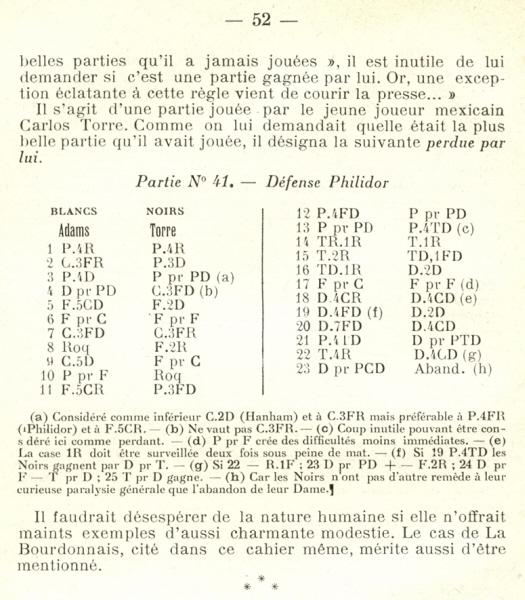
2) Chernev’s reference to Les Cahiers de l’Echiquier Français in connection with the Adams v Torre brilliancy is of interest. The French magazine (see the illustration above) did not mention Torre’s notes or give any date, merely indicating that the game had recently been appearing in print. Moreover, since the game was in the second cahier, whereas even the fourth one was still dated 1925, the French magazine apparently gave the game well before it appeared in the November 1925 American Chess Bulletin. But where did it obtain the game and, in particular, what was its source for the statement that Torre considered that loss his most beautiful game?
(5219)
From Michael Negele (Wuppertal, Germany) comes page 244 of The Good Companion, May 1920:
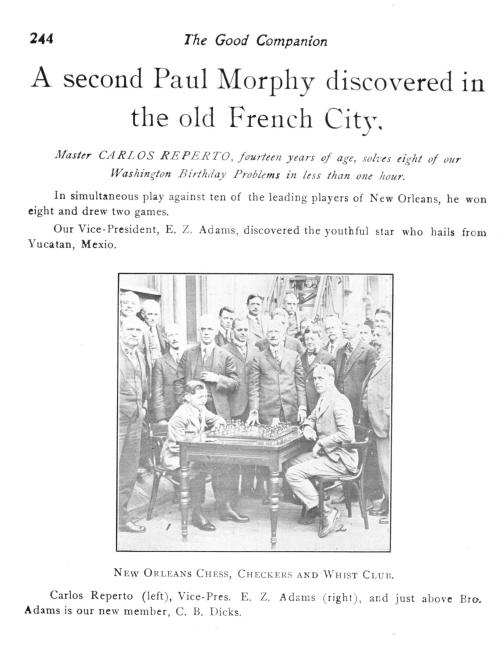
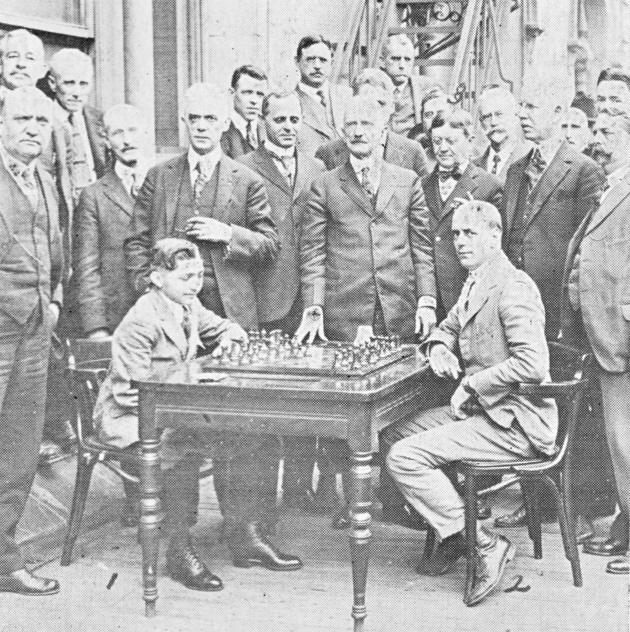
(7869)
Fred Reinfeld published the disputed Adams v Torre brilliancy on pages 137-143 of How to Play Chess Like a Champion (New York, 1956). His concluding remark:
‘This is the finest game ever won by an amateur against a master. Undoubtedly the feat will be repeated in time to come, but it’s safe to say that no-one will ever improve on it for smooth artistry and pitiless logic.’
Calling Torre a master at the time the game was purportedly played is hard to justify.
A contribution by Edgard Tchélébi to D.J. Morgan’s Quotes and Queries column, BCM, September 1953, page 249:
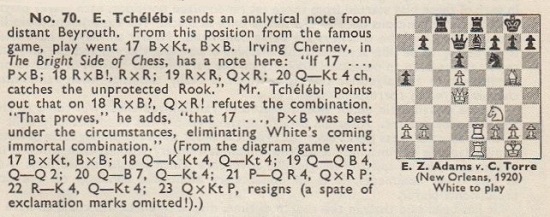
João Pedro S. Mendonça Correia (Lisbon) refers to another position leading to the back-rank theme. It comes from a game played in the first half of the 1880s in which Siegbert Tarrasch was White against Bernhard Richter:
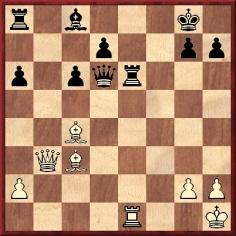
After 1...Kh8 (given a question mark by Tarrasch) White won with 2 Bxe6 dxe6 3 Rd1 Qc7
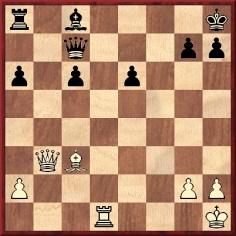
4 Ba5 Qxa5 5 Qb4 Resigns.
Source: Dreihundert Schachpartien by S. Tarrasch (Leipzig, 1909), page 43. See also page 37 of the English edition Three Hundred Chess Games (Park Hill, 1999). The position appeared too on pages 262-263 of Tarrasch’s book Das Schachspiel (Berlin, 1931) and pages 186-187 of The Game of Chess (London, 1935).
It may be recalled from page 29 of Chess Explorations that C.N. 53 gave, with the winner’s notes, the game below:
Lorenzo Ponce-Sala – J. Parpal1 e4 c5 2 Nf3 d6 3 d4 cxd4 4 Nxd4 Nf6 5 Nc3 g6 6 Be2 Nc6 7 Be3 Bg7 8 f4 Qb6 9 Nf5 Qxb2 10 Nxg7+ Kf8 11 Bd2 Kxg7 12 Rb1 Qa3 13 O-O Nd4 14 e5 Nxe2+ 15 Qxe2 dxe5 16 fxe5 Qc5+ 17 Be3 Qxc3 18 exf6+ exf6 19 Rb3 Qe5 20 Qd2 Bf5 21 Bh6+ Kg8 22 Re1 Qc5+ 23 Kh1 Qxc2
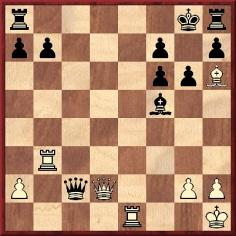
24 Rbe3 Qc6 25 Qd5 Be6 26 Qd4 Bd7
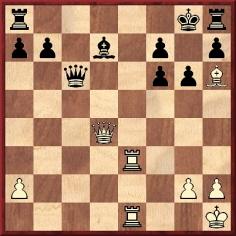
27 Re6 fxe6 28 Qxf6 Resigns.
Source: Estrategia y Táctica en Ajedrez by L. Ponce-Sala (Barcelona, 1975), pages 95-96.
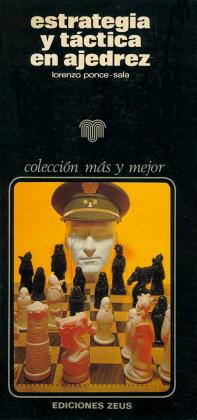
(5817)
C.N. 2781 gave one of Torre’s earliest published games:
Carlos Torre – Edward Lasker
New Orleans, November 1921
Ruy López
1 e4 e5 2 Nf3 Nc6 3 Bb5 a6 4 Ba4 Nf6 5 O-O d6 6 d4 b5 7 dxe5 dxe5 8 Qxd8+ Nxd8 9 Bb3 Bd6 10 Re1 c5 11 c4 Be6 12 Rd1 Ke7 13 Nc3 Rb8 14 Be3 Nc6 15 Nd5+ Bxd5 16 cxd5 Nd4 17 Bxd4 cxd4 18 Rac1 Rhc8 19 Bc2 Rc7 20 Bd3 Rbc8 21 Rxc7+ Rxc7 22 a4 bxa4 23 Ra1 a3 24 bxa3 Rc3 25 Bxa6 Nxe4 26 a4 f6 27 Bb5 d3 28 a5 Bc5 29 a6 Bxf2+ 30 Kf1 Ba7 31 Rd1 Nc5 32 Ke1
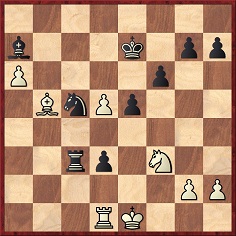
32…Rc2 33 Bxd3 Nxd3+ 34 Rxd3 e4 35 Rb3 exf3 36 Rb7+ Kd6 37 Rxa7 fxg2 38 Rxg7 Ra2 39 h4 Kxd5 40 a7 Ke4 41 Rg8 Kf3 42 White resigns.
Source: American Chess Bulletin, December 1921, page 203.
Addition on 13 July 2023:
One YouTube chess presenter shines through in terms of clarity, freshness and charisma: Zachary (Zach) Saine. See, for example, his coverage of the famous Adams v Torre game.
See also our feature article on Torre.
To the Chess Notes main page.
To the Archives for other feature articles.
Copyright: Edward Winter. All rights reserved.